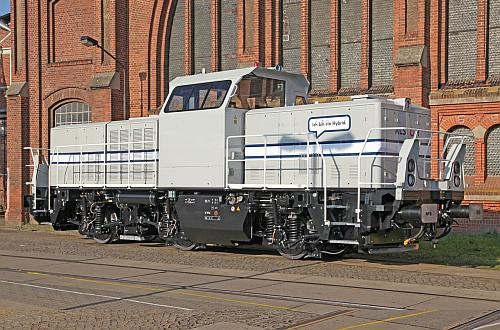The three-axle 100km/h H3 is powered by a 350kW stage IIIB-compatible diesel generator and batteries, and is expected to spend between 50 and 75% of its operational time in battery mode. As a result, the H3 should consume between 30 and 50% less fuel than a conventional diesel shunter and cut pollution emissions by more than 50%. The axles can steer independently to reduce wheel wear in curves.
The first locomotive will be delivered at the end of this year, while the second will arrive in Ingolstadt at the end of 2016.
"The size and performance of the locomotives are perfectly tailored to our requirements," says Mr Johann Schmid, operations manager for Audi's Ingolstadt industrial railway. "Whereas the old locomotives consume over 20 litres of fuel per hour, the generator of the hybrid locomotive, which is only needed to charge the battery block, requires a maximum of nine litres per hour."
The H3-hybrid project is an initiative of the Eco Rail Innovation programme launched by German (DB) and 19 partner companies and organisations in March 2011. Three locomotives have already been purchased by Volkswagen for shunting at its Wolfsburg plant and Alstom is supplying five H3s to DB for trials in marshalling yards at Würzburg and Nuremberg.

